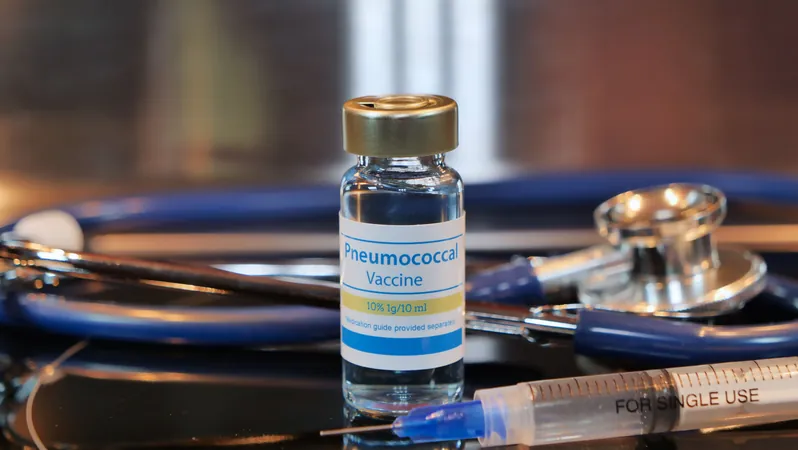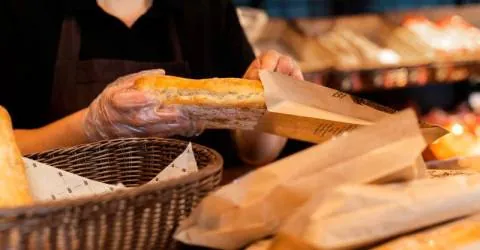
Bridging the Knowledge Gap: Enhancing Pneumococcal Vaccination in Community Pharmacies
2025-03-31
Author: Arjun
The effectiveness of pneumococcal vaccination programs in community pharmacies is currently hindered by significant knowledge gaps among pharmacists and various patient barriers, as revealed in a recent study featured in the journal Vaccine. The authors emphasize that targeted education and strategic interventions are critical for the long-term success of immunization initiatives within these settings.
The Public Health Threat of Pneumococcal Disease
Pneumococcal disease poses a serious threat to public health globally, resulting in substantial morbidity and mortality, especially among young children and elderly individuals with underlying medical conditions. In the U.S., a staggering 67% of invasive pneumococcal infections in individuals aged 50 to 64 occur in those with chronic or immunocompromised health conditions. To combat this, the CDC recommends two types of vaccinations—pneumococcal conjugate and pneumococcal polysaccharide—tailored to patients based on their age and specific risk factors.
The Role of Pharmacists in Vaccine Delivery
Historically, pharmacists have played a crucial role in vaccine delivery, a responsibility that surged during the COVID-19 pandemic, with pharmacies administering over 90% of COVID vaccines and a significant share of influenza vaccines. However, pneumococcal vaccinations in pharmacies remain frustratingly low, with only 40-50% of eligible vaccinations being dispensed, largely due to complex vaccination schedules that may confuse both pharmacists and patients.
Research Findings on Education and Barriers
In an investigative effort, researchers from the University of South Carolina sought to pinpoint the obstacles faced by pharmacists regarding pneumococcal vaccinations by surveying 124 community pharmacy professionals across South Carolina. The study, conducted via email, involved 33 probing questions addressing vaccine knowledge, practical barriers, readiness for change, and demographic factors.
Out of 58 respondents—predominantly PharmD holders with managerial positions—critical findings emerged. Many pharmacists struggled to correctly identify the recommended vaccines, correctly responding to only a handful of case scenarios. Among the barriers highlighted, over half of the respondents indicated difficulties in determining patient eligibility, while nearly 45% cited patient reluctance as a minor concern. Financial challenges, lack of resources, and patient-related issues were the predominant barriers reported.
Pharmacists' Confidence and Future Training
Despite a general confidence in their pharmacy's operational capacity to implement new vaccination services, an alarming 74.2% of respondents expressed uncertainty regarding their staff's willingness to adopt these initiatives. The survey indicated a pattern where flu vaccinations lead the way, followed by shingles and COVID-19 vaccines. Impressively, approximately 84.5% administered pneumococcal polysaccharide vaccines, while 77.6% managed to dispense pneumococcal conjugate 13 vaccines.
Call to Action
In light of these insights, the authors urge that developing specific training programs for pharmacists is essential. Emphasizing confidence in correctly administering pneumococcal vaccines—especially for high-risk patients—should be a primary focus of future training efforts. Addressing these barriers is crucial to the successful implementation and uptake of pneumococcal vaccination services within community pharmacies.
As the demand for immunizations continues, enhancing the capabilities and knowledge of pharmacists could mean the difference between life and death for many in the community. Let's rally around this vital cause to protect our most vulnerable populations!
Stay Updated
Stay updated with the latest vital health information by subscribing to our health news alerts.



 Brasil (PT)
Brasil (PT)
 Canada (EN)
Canada (EN)
 Chile (ES)
Chile (ES)
 Česko (CS)
Česko (CS)
 대한민국 (KO)
대한민국 (KO)
 España (ES)
España (ES)
 France (FR)
France (FR)
 Hong Kong (EN)
Hong Kong (EN)
 Italia (IT)
Italia (IT)
 日本 (JA)
日本 (JA)
 Magyarország (HU)
Magyarország (HU)
 Norge (NO)
Norge (NO)
 Polska (PL)
Polska (PL)
 Schweiz (DE)
Schweiz (DE)
 Singapore (EN)
Singapore (EN)
 Sverige (SV)
Sverige (SV)
 Suomi (FI)
Suomi (FI)
 Türkiye (TR)
Türkiye (TR)
 الإمارات العربية المتحدة (AR)
الإمارات العربية المتحدة (AR)